It’s been a while since the last devlog and VLOG because a lot has been happening.
All the work in Unity3D has been halted, and the new Retro Recording Studio is being developed in Unreal Engine 5.
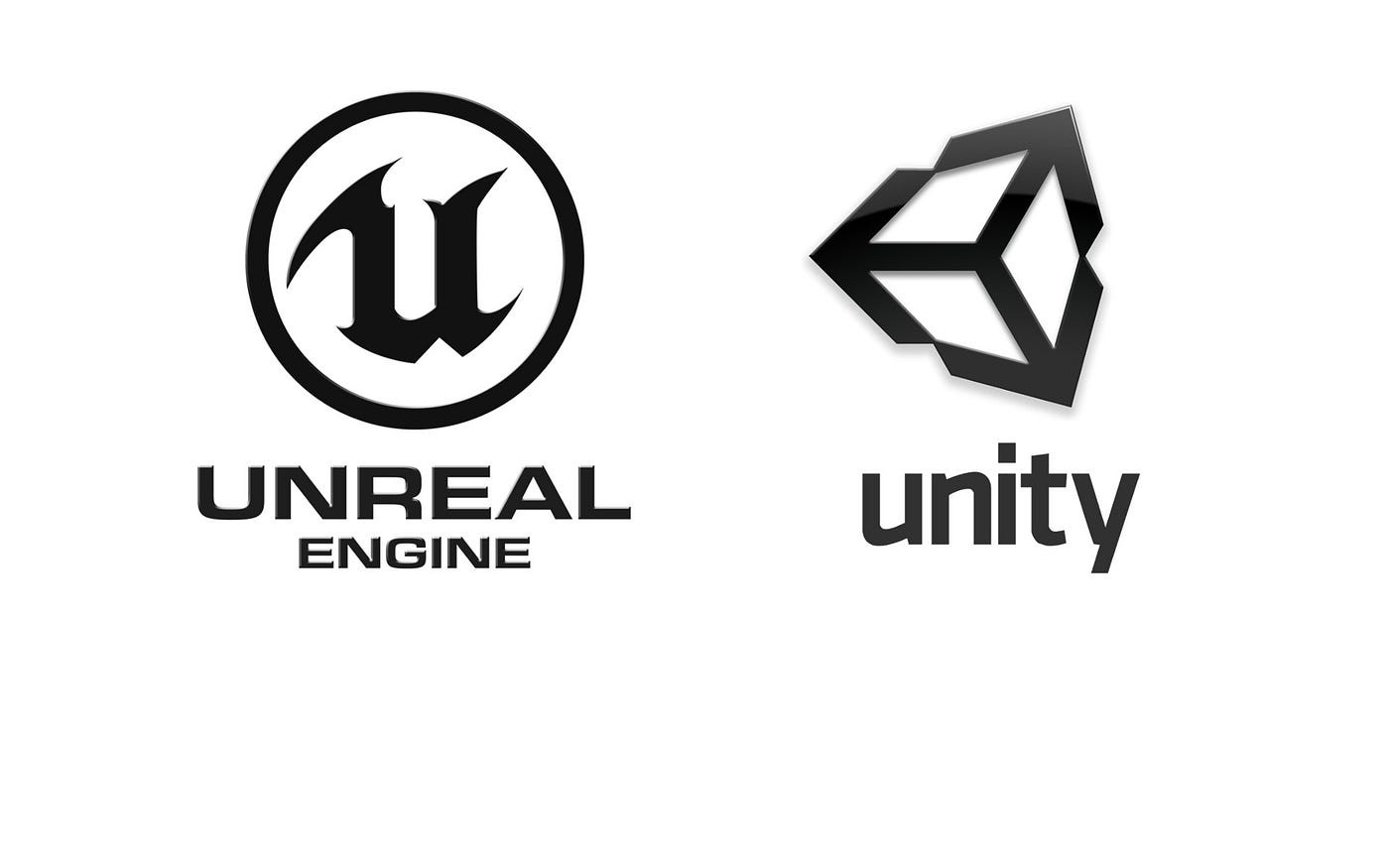
Switching from Unity3D to Unreal
A reason there were not many updates is that Unity is a changing company. Unity changed its pricing structure last year, which caused a significant backlash from indie Unity game developers.
I was not affected by these new plans and decisions, but I understand the effect on others. It made me think twice about using Unity. I’ve already felt in the last few years that the game engine was not the company’s main focus anymore. Since 2017/2018, they were happier introducing new features (many of which were never released (DOTS AUDIO ANYONE????) than improving upon the engine and fixing long-standing issues, bugs and missing features.. All under command of a money-driven CEO John Riccitelo who has no affiliation with game devs whatsoever and you got a shitty project with a shitty future. Too bad the original created an abandoned ship a while ago
Here you can see some development screenshots of the latest stuff that I’ve been building in Unreal Engine and Blender. Yeah, that’s an SSL inspired for those who are wondering. Still have to think of a name, maybe the LLS. And of course, the return of the Bruder (a Studer-inspired multitrack)
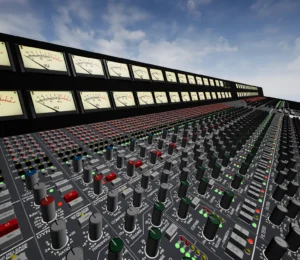
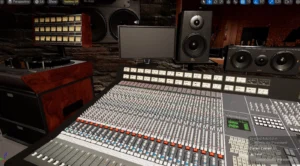
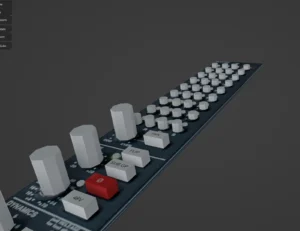
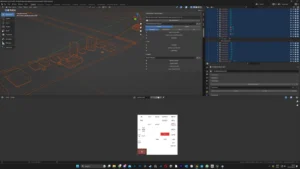
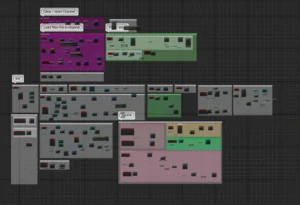

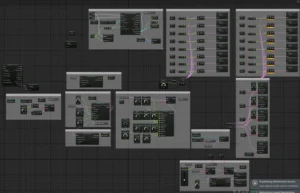


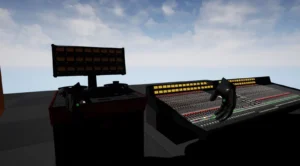
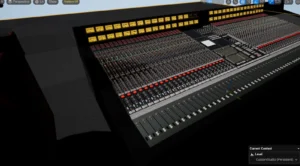
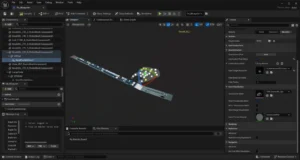
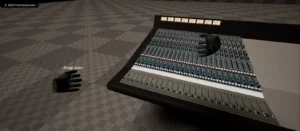
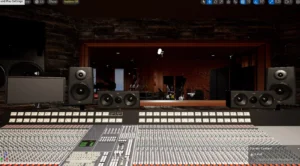

Although I liked working in C# and have worked in Unity since 2013 so could find my way around quite well, I still didn’t find it intuitive to work on VR projects in Unity and performance was often an issue as I had to go back in and change things around to get it more optimized.
While this was happening, I read about the improvements on Metasound in Unreal, which sounded like just the thing I wanted from DOTS Audio in Unity3D, so why not give Unreal a try? Since I opened Unity twice —once to back up and the other for fun—my work is in Unreal.
After finding so many things I hated in Unreal, I still couldn’t leave it alone and wanted to learn more, that’s when I knew I was on the right track. The engine powered my creativity, and I’m learning more and more how this engine works.
Start with the console in Blender
I modelled an SSL 4000 G inspired console in Blender based on the research and pictures I found online. I started to see if I could import this in Unreal, and I could add VR interaction and audio modulation/manipulation in Unreal. It took me a month or so and a lot of headaches and frustration about the general lack of good educational material for Unreal (except 3rd party shooters, millions of them), but I got the hang of it.
Soon enough, I had a demo playing with multiple tracks, with volume control, etc. I’m starting to like blueprints more than C#. It was slow in the beginning, but a lot easier to read and optimise. Even without trying, I could hit 120 fps in Unreal, so I’m not worried about optimising for VR just yet. The VR integration is far behind Unity, so I still have to invent and implement a lot of basic stuff myself. (movement, grabbing, controlling, spawning, haptics, etc), But hey, it’s working.
It’s already looking much better than Unity, so my path is forward with Unreal. There is a release of a new beta version for ppl to try out available in my Discord.
Advantages of using Unreal over Unity
The main advantages of Unreal I have noticed so far are :
- Metasounds is a solid and robust audio tool in Unreal that can handle 95% of what I want. All channel processing, routing, cue sends, compressor, metering, etc, is handled this way.
- Channels and sub-mixes and logic implemented with blueprints can probably do the rest, like start/ stop/rewind/timekeeping / sound FX/inserts / routing externally / metering (VU and digital)
- Working in blueprints is slower than C#, but when built is better readable and easier to re-use and optimise.
- Unreal Engine renders just nicer out of the box, and FPS seem to stay high, although I use quite some objects and FX
- Debugging in Unreal is a different ball game than C#, and it’s way more complicated to do, but the same applies to the BP. Once you get the hang of it, it solves problems faster than code debugging.
And some of the downsides of Unreal Engine compared to Unity3D
- The outliner is nothing like the hierarchy view in Unity. You can’t disable stuff or select stuff easily. Even using it for parent/group stuff is cumbersome
- working in Blueprint, a lot of the editor tools like snapping, dropping to the floor, selecting in the outliner, etc, don’t work. Only when working on the root level does this stuff work
- There are so many settings for everything, which makes things unnecessarily complex all the time
- Sometimes Unreal Editor slows down so much that working in it is a real pain. Don’t know if it’s only this project, my system or some bug, but I have been having this issue since the beginning, and it keeps me from making big jumps in dev.
- Importing stuff in Unreal converts them to Uassets, which you can’t edit externally. So, reimport is needed every time you adjust.
- When importing meshes as FBX, your pivot points will all shift to the centre, which is just stupid. Data Smith allows you to fix a bit of this shit
- Plugins don’t always work nicely together
- Lack of good tutorials and documentation. They are way behind on everything. Luckily, YouTube helps out a lot, but the main focus is game dev, and my project is less game and more simulation
- Building for Android is not easy at all
- strange errors in the log sometimes, which I don’t understand. Can’t click on the log to find out what caused it (like Unity)
- Outliner always has all nodes open, but should stay closed (folded) when possible
- Hitting F on the outliner (or whatever it’s called in UE) should go to the selected object. Especially within components in blueprints
- Favourites can only have folders, not items, WTF?
- can’t disable parts of the scene for performance testing
- While in play mode, you can’t see changes reflected in the editor.
- UE should look at the solo panel feature Adobe uses in Lightroom and stuff, to make the right-hand side of the interface so much more accessible and user-friendly.
